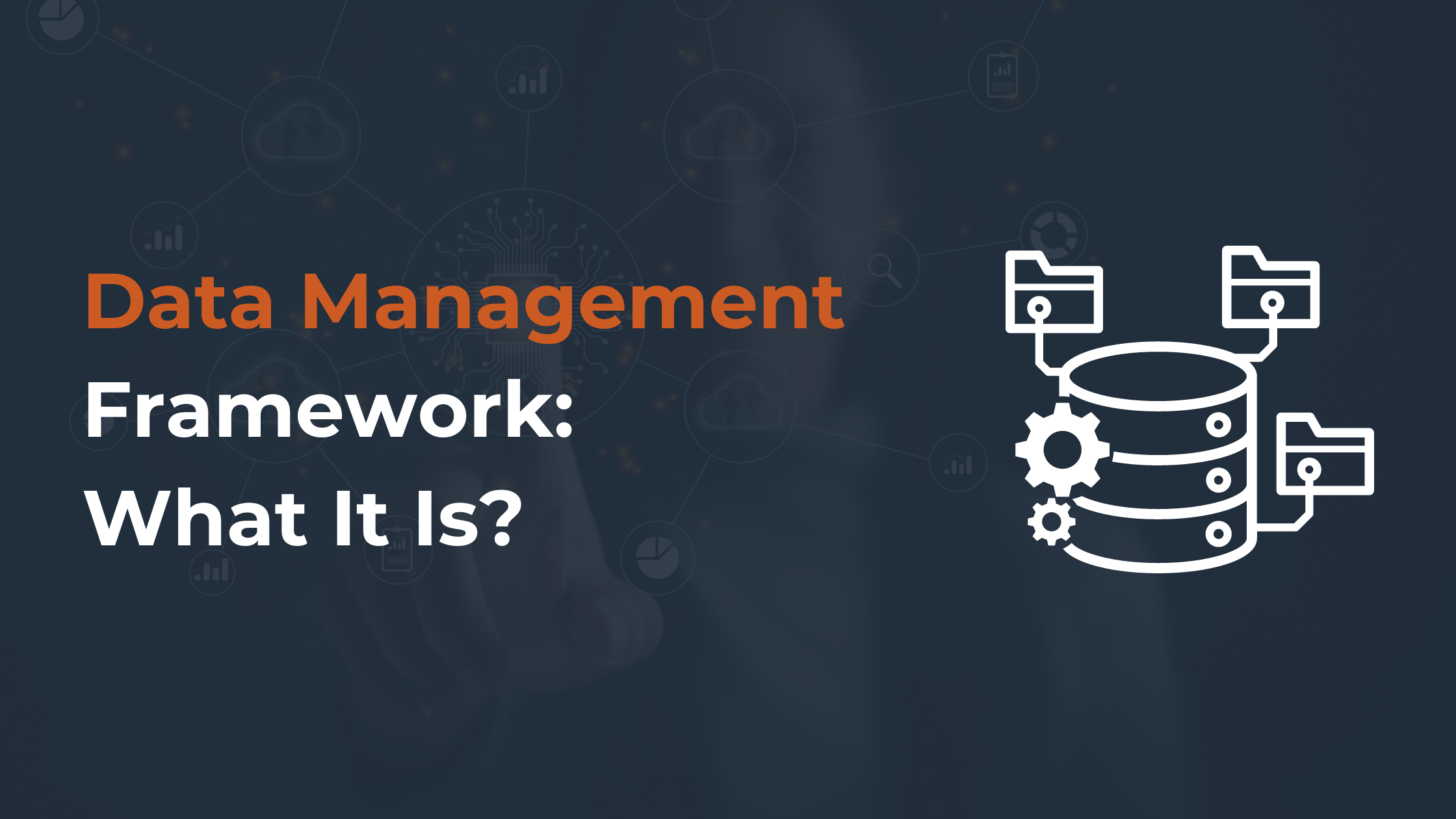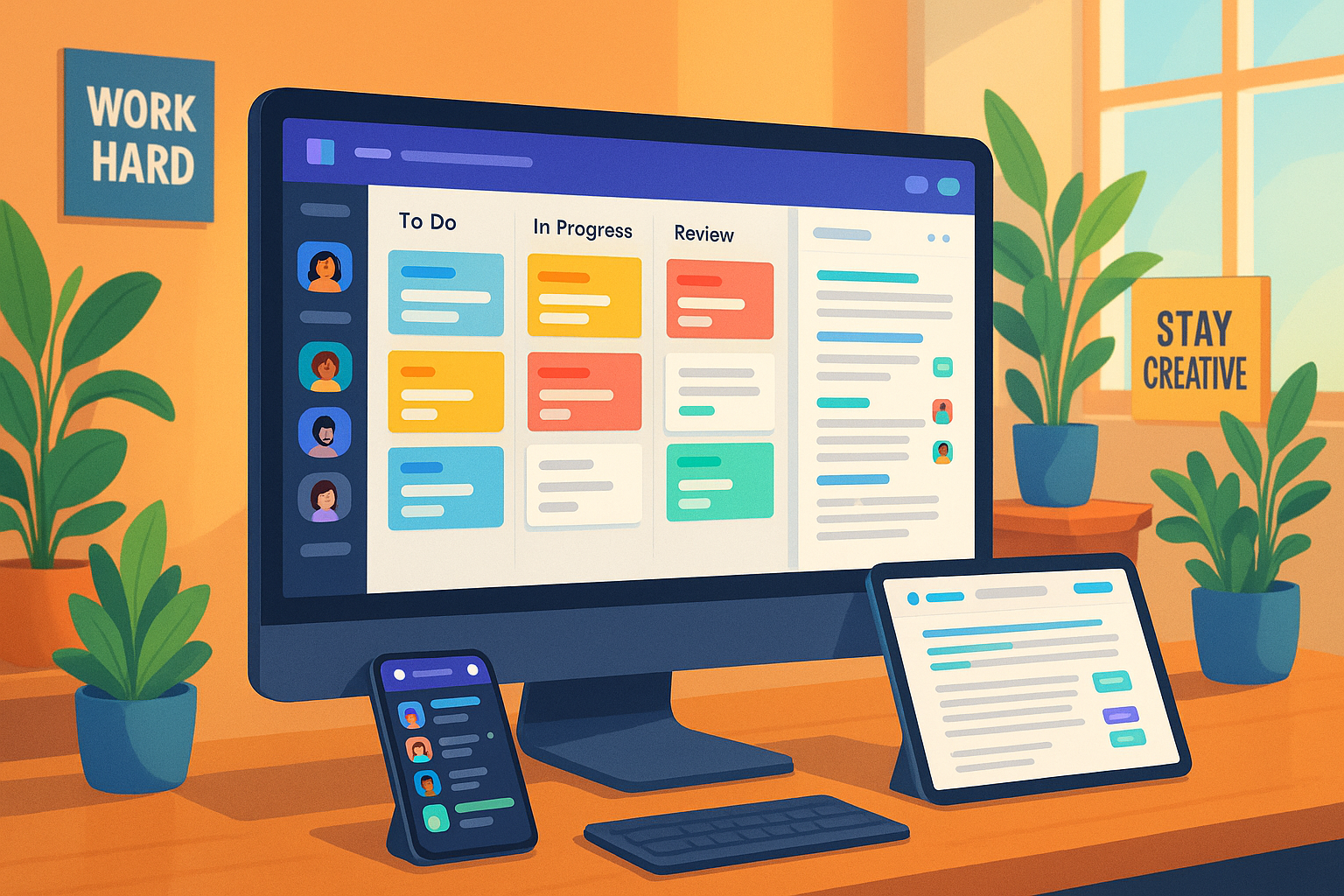What is a Data Management Framework?
A data management framework is a rulebook for how companies handle their data. It’s a collection of policies, processes, and best practices that keep data in check—ensuring it’s accurate, consistent, and trustworthy enough to boost smart business decisions. A solid framework covers a range of essentials: data governance, quality control, seamless integration, security measures, privacy protocols, retention rules, the architecture of your data, and, of course, data analytics.
Elements of a Data Management Framework
Let’s break down the key pieces of a data management framework. Ready?
- Data Governance: Data governance lays out all the policies, processes, standards, and roles needed to treat data as a valuable asset. Everyone knows their part, and the data is treated with the care it deserves.
- Data Quality: It's like quality control, where data is validated, and matched up nicely. Metrics and reports help track just how good that data is!
- Data Integration: It’s the process of merging data from different systems into one cohesive picture. From mapping data elements to transforming and cleaning up the info, it's all about blending things smoothly with the help of tools and best practices.
- Data Security: We’re talking about locking data up from unauthorized access or tampering, using things like encryption, access controls, and top-notch security practices to keep the bad guys out.
- Data Privacy: Similar to data security but with a focus on protecting personal information. This involves keeping personal data safe from unwanted access or misuse by following strict privacy rules, encryption, and access controls.
- Data Retention: Data retention is about storing data for a set time based on legal, regulatory, or business needs. It includes archiving, purging, and having clear policies on what stays and what goes.
- Data Architecture: This is where data models and database structures come into play, ensuring they’re designed to meet the organization’s business goals. It’s all about good modeling, smart database design, and following best practices.
- Data Analytics: Data analytics is about digging into that data treasure trove to uncover insights and help make smarter decisions. With tools like data warehousing, mining, and visualization, it turns raw data into a decision-making powerhouse.
Benefits of Data Management Frameworks
Data management frameworks help organizations not only manage their data smoothly but also squeeze the most out of it. These frameworks turn data into a powerhouse, transforming it into a strategic asset that drives success.
Supercharging decision-making and planning
These frameworks give structure to mountains of data, enabling sharp decision-making based on clear insights and helping resolve pesky data quality issues. They set the stage for predictive analytics, encouraging proactive moves and spreading a culture of data-driven decisions across the business. By enhancing risk assessments and enabling real-time fraud detection, they ramp up security while keeping customers happy.
Boosting operational efficiency and compliance
Data standardization and accuracy aren’t just about keeping things tidy; they improve customer satisfaction and help grow trust and revenue. With these frameworks, staying on the right side of government regulations and protecting sensitive data becomes second nature, helping avoid hefty fines and safeguarding your brand. They also lay the groundwork for solid data governance policies and robust security measures, making sure unauthorized access and cyber threats are kept at bay.
Enhancing productivity and cutting costs
A well-oiled framework ensures that authorized personnel can quickly retrieve information, which supercharges collaboration and boosts productivity. By handling data efficiently, they reduce errors and duplication, leading to smarter decision-making and smoother business processes. Streamlining data storage and processing, these frameworks cut down on redundancies, slashing operational costs and improving profit margins.
Tailored for industry-specific needs
In industries like healthcare, banking, and insurance, frameworks flex with tech advancements and regulatory shifts—think blockchain for healthcare security, new payment tech in banking, and predictive analytics in insurance risk management.
These frameworks are customized to industry priorities—whether it’s patient privacy in healthcare, risk mitigation in banking, or precise risk assessment in insurance, they ensure secure data sharing and regulatory compliance.
Tailored approaches mean streamlined healthcare operations, faster transaction processing in banking, and automated underwriting in insurance, driving efficiency while keeping everything compliant.
The Evolution and Challenges of Data Management Frameworks
Data management frameworks have come a long way, evolving to keep up with the ever-growing mountains of data that modern businesses juggle daily. These advancements mirror the latest trends in data handling, designed to improve efficiency, protect data integrity, and boost innovation across industries. But, as with all progress, rolling out and maintaining these frameworks comes with unique hurdles.
Advances in data management frameworks
- Ethics and scalability: Today’s frameworks and data management are all about responsible data usage. Not only do they ensure compliance with legal standards, but they’re also built to grow as your organization’s data needs expand.
- Collaboration and custom APIs: With the rise of cloud-based systems and the demand for interconnected data environments, frameworks are getting better at supporting cross-platform collaboration. Customizable APIs, designed with privacy in mind, are now a staple, allowing for more secure and tailored data sharing.
- Governance and quality: There’s a big focus on data governance and quality in the latest frameworks. By prioritizing solid authorization practices, data protection, and accuracy management, these systems ensure your data stays reliable, up-to-date, and trustworthy.
Challenges in implementing data management frameworks
- Resistance to change: Switching to a new data framework isn’t always smooth sailing. When an organization’s routines and systems are well ingrained, staff and leadership can hesitate to embrace the change.
- Resource strains: Rolling out a comprehensive data management system is no small feat. It takes a significant investment of time, money, and people power. When budgets and resources are tight, these efforts can easily hit a roadblock.
- Integration headaches: Merging new frameworks with existing legacy systems is another challenge. Ensuring everything works seamlessly can be a complex, time-consuming process that requires expert know-how. SyncMatters is your solution when it comes to data integration, acting as the bridge between various CRMs and other business systems. Imagine juggling data across 45+ different CRMs—sounds like a nightmare, right? SyncMatters simplifies the chaos by unifying these data points into one cohesive ecosystem. It’s like having a personal assistant for your data, making sure everything gets where it needs to go without errors or delays.
In short, while modern data management frameworks offer the promise of better data handling, tackling the challenges that come with implementation takes a thoughtful approach. Organizations that prioritize clear communication, allocate proper resources, and listen to the advice of data management professionals will be better positioned to unlock the full potential of these frameworks—boosting innovation and efficiency along the way.
How to Build Your Data Management Framework
So, you're looking to set up a data management framework? Fantastic! No matter which framework you choose, the steps to establish a solid data management function are pretty similar across the board.
Step 1: Defining the Scope of Your Data Management Function
First things first, you need to figure out the scope of your data management function. This isn't a one-size-fits-all deal—it varies based on your company's unique needs and resources. Here's what to consider:
Business Drivers
Think of business drivers as the catalysts pushing your company to embark on this initiative. They can be external factors like regulations (hello, GDPR!) or internal goals like digital transformation or implementing AI/ML solutions to enhance customer experience.
Stakeholder Needs
Your business drivers will point you toward your stakeholders, both external and internal. Each group will have different, sometimes conflicting, needs and expectations. For instance, if you're diving into digital transformation, you can't overhaul all business processes overnight—it requires significant investment. The finance team might prioritize efficiency and productivity, while the sales department focuses on boosting revenue through improved customer experiences.
Enterprise Scope
Decide whether to implement your data management function company-wide or within specific business units. The best approach depends on your business drivers and organizational structure.
Required Data Management Capabilities
Data management is a multifaceted discipline. Depending on your specific drivers, you'll need various data management capabilities. Common foundational ones include data governance, data modeling, data and application architecture, and data quality management.
Step 2: Conducting a preliminary maturity assessment
Every company manages data in some form, even without a formal data management function. A preliminary maturity assessment helps you evaluate existing capabilities and identify gaps that need attention.
Step 3: Crafting your data strategy and roadmap
With the insights from your gap analysis, it's time to define your strategic vision for data management in the medium to long term. Consider this your game plan—the "Orange" Data Management Framework (DMF) refers to this as your strategy and roadmap.
Step 4: Designing data management capabilities
Based on your chosen framework, you'll design the necessary capabilities. According to the "Orange" DMF, a capability is your company's ability to achieve goals or deliver outcomes. Start by identifying the deliverables you need. Then, ensure you have the policies, standards, and regulatory documents to support them. Processes will help you adhere to these regulations, roles will execute the processes, tools will enable them, and don't forget—you'll need a budget to bring it all to life.
Step 5: Implementing your data management framework
Rolling out your framework can vary depending on your company's size, resources, and business drivers. The "Orange" DMF outlines three main approaches: centralized, decentralized, and hybrid. Each has its pros and cons and suits different scenarios.
Step 6: Performing a detailed maturity assessment
Now, take a deep dive into assessing maturity at a granular level—think processes, policies, and specific capability dimensions. This detailed assessment aids in developing precise short-term plans and helps establish a system of key performance indicators (KPIs).
Step 7: Setting up your KPI system
Finally, set up two types of KPIs: one to measure your progress in establishing data management capabilities and another to assess operational efficiency. You can establish KPIs at various levels of abstraction to get a comprehensive view.
By following these steps, you'll be well on your way to building a robust data management framework that aligns with your company's goals and resources. Remember, it's a journey filled with learning and growth—so embrace the process and watch your data management capabilities flourish!
The Future of Data Management Frameworks
As technology evolves, so must enterprise data management frameworks and others to accommodate emerging trends, new challenges, and increasing volumes of data. Here's a look at the key developments shaping the future of DMFs:
1. AI and machine learning integration
AI and Machine Learning (ML) are transforming data management by automating tasks like data cleansing, quality assurance, and governance. These technologies will enable real-time data processing, predictive data governance, and deeper insights, enhancing decision-making while reducing manual effort.
2. Edge computing and IoT
With the rise of IoT and edge computing, data is being generated and processed closer to the source. Future DMFs will need to handle decentralized, real-time data from various devices while ensuring security and efficiency. Managing distributed data flows and maintaining data integrity at the edge will be crucial.
3. Blockchain for data security
Blockchain technology offers solutions for securing data through immutable records and decentralized control. Future data management framework examples will use blockchain to ensure data integrity, automate governance through smart contracts, and enhance trust in data transactions.
4. Cloud-native frameworks
The migration to cloud environments will accelerate, with businesses adopting cloud-native DMFs for scalability, flexibility, and cost-efficiency. However, managing data governance and security in multi-cloud and hybrid-cloud settings will become a critical challenge.
5. Automation and self-service
The future of data management will prioritize the automation of routine tasks and empower non-technical users through self-service tools. DMFs will need to ensure data governance remains intact while enabling easier access and use of data across organizations.
6. Data fabric and data mesh
Emerging architectures like data fabric and data mesh will reshape data management by decentralizing ownership and integrating data from diverse sources. These approaches will drive agility and efficiency, making data more accessible without compromising governance.
Final Thoughts
So, what is a data management framework? Data management frameworks are game-changers when it comes to boosting data integrity, security, operational efficiency, and smart decision-making in today’s data-driven world. To roll these frameworks out successfully, organizations need a clear game plan, the agility to pivot when needed, and a dedication to continuous improvement. When done right, these frameworks don’t just help manage data—they turn it into a powerful tool for innovation and give companies that extra edge in the competitive landscape.








